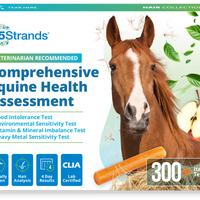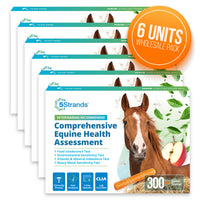Meal planning is the process of deciding what meals you will eat for some time, such as a week or a month. It can be as simple as writing down a list of meals, or as complex as creating detailed recipes and shopping lists.
Imagine being able to create meal plans that are both healthy and delicious, even with food intolerances. That's the power of meal planning, and it's something that I'm excited to teach you about in this blog post.
I know that meal planning can seem daunting, especially if you have food intolerances. But I'm here to tell you that it's possible, and it's actually easier than you think. I'm going to share with you my top tips for meal planning with food intolerances. I'll also provide you with a variety of recipes and resources to help you get started. By the end of this, you'll have everything you need to create meal plans that are easy to follow, healthy, and delicious.
Here's a creative and new perspective on meal planning with food intolerances:
Think of meal planning as a way to be kind to yourself. When you have food intolerances, it can be tough to navigate the world of food. But by meal planning, you can take control of your diet and make sure that you're eating foods that are good for you.
Meal planning can also be a lot of fun. It's a great way to experiment with new recipes and discover new foods that you enjoy. So don't be afraid to get creative and have fun with it!
Here’s how:
Meal planning has many benefits, both for your health and your budget. Here are just a few reasons why you should consider meal planning, and how to do it:
Save money. Last year the U.S. Bureau of Labor Statistics released a shocking report that just between 2021 and 2022 there was a 9.0% increase in average consumer unit expenditures. At the same time, U.S. households saw an increase of 3.8% in the cost of food delivery services and eating out.
Eliminating unhealthy foods can be a struggle, but it's worth it for your health and your wallet. Unhealthy foods are often more expensive than healthy foods, and they can also lead to health problems that can be costly to treat.
Meal planning can help you save money on groceries by reducing food waste and impulse purchases. When you know what meals you're going to eat, you can make a shopping list and stick to it. This will help you avoid buying unnecessary items that you'll end up throwing away.
Think of it like this: every time you buy unhealthy food, you're not just throwing away your money, you're also throwing away your health. But when you choose to eat healthy, you're investing in your future.
Here are a few tips for saving money by eliminating unhealthy foods:
-
Plan your meals ahead of time. This will help you avoid impulse purchases at the grocery store.
-
Cook at home more often. Eating out is expensive, and it's often difficult to make healthy choices at restaurants.
-
Buy in bulk. This can save you money on healthy staples like fruits, vegetables, and whole grains.
-
Shop around for the best prices. Compare prices at different grocery stores to find the best deals.
Grow your own food. If you have the space, growing your own food can be a great way to save money on healthy produce.

Eliminating unhealthy foods may seem like a sacrifice at first, but it's actually an investment in your future health and wealth. By following the tips above, you can save money and improve your health at the same time.
Remember, every small step counts. Even if you can only eliminate a few unhealthy foods from your diet, you're still making progress. And every dollar you save adds up over time.
Reducing your daily stress with a meal planning routine. Meal planning is a great way to reduce stress and improve your overall well-being. By following the tips above, you can create a meal-planning routine that works for you and helps you feel less stressed.
When you have a plan, you don't have to worry about last-minute decisions about what to eat. This can be especially helpful on busy weeknights when you're already juggling a lot.
Think of meal planning as a way to give yourself a break. When you have a plan, you don't have to use up your mental energy trying to figure out what to eat. You can simply follow your plan and enjoy your meal.
Here are some tips for reducing stress with meal planning:
- Make a plan for the week on Sunday. This will give you plenty of time to shop for groceries and prepare your meals.
- Keep your plan simple. Don't try to cook complicated meals every night. Instead, focus on quick and easy meals that you can make in 30 minutes or less.
- Be flexible. Things don't always go according to plan, so be prepared to make adjustments as needed.
- Don't be afraid to ask for help. If you have a partner, family members, or friends who are willing to help, ask them to pitch in with meal planning and preparation.
- Eat healthier meals by planning ahead of your hunger. When you have a plan, you're less likely to reach for unhealthy convenience foods or order takeout. Instead, you can focus on creating meals that are nutritious and balanced.
Here's a creative and new perspective on how meal planning can help you eat healthier:
Think of meal planning as a way to fuel your body and mind with the nutrients you need to thrive. When you eat healthy meals, you have more energy, you focus better, and you feel better overall.
Here are some tips for eating healthier with meal planning:
- Make a list of your favorite healthy foods. This will make it easier to create meal plans that you'll enjoy.
- Include a variety of foods from all food groups in your meal plans. This will help you make sure that you're getting all the nutrients you need.
- List your recipe ingredients in your shopping list before you go shopping. Doing this makes it much less tempting to pick up something that’s not in your meal plan when you’re at the store.
- Cook at home more often. This gives you more control over the ingredients in your food.
- Don't be afraid to experiment with new recipes. There are many delicious and healthy
Following the tips above, you can create meal plans that help you eat and feel your best.
Save time for your meal planning ahead for the week/month
When you have a plan, you don't have to waste time deciding what to eat or making multiple trips to the grocery store. Instead, you can cook your meals ahead of time or batch-cook meals for the week.
Think of meal planning as a way to invest in your future. When you take the time to plan your meals ahead of time, you're saving yourself time and hassle down the road. You'll also be more likely to eat healthy meals, which can save you time and money on doctor visits and other health-related expenses.
Here are some tips for saving time with meal planning:
- Set aside time each week to plan your meals. This can be as little as 30 minutes.
- Make a list of your favorite quick and easy meals. This will make it easier to create meal plans that you can actually stick to.
- Cook in bulk on the weekends. This will give you meals that you can easily reheat during the week.
- Use a crockpot or slow cooker. These appliances can cook meals while you're at work or running errands.
- Freeze leftovers. This is a great way to save time and money on weeknight meals.

Save time, money, and temptation with a pick-up order
When you plan a pick-up order you can choose from a wide variety of healthy and delicious meals and avoid the temptation of unhealthy items on the store shelves. Plus, you'll save even more time by skipping the checkout line.
Here are some tips for ordering ahead with an online pick-up order:
- Choose a grocery store that offers online pick-up and delivery.
- Create an account and create a list of your favorite healthy meals.
- Place your order ahead of time, especially if you're ordering for a busy weeknight.
- When you arrive at the grocery store, pull up to the designated pick-up area and give your name to an employee.
- Load your groceries into your car and you're good to go!
Ordering ahead with an online pick-up order is a great way to save time and avoid the temptation of unhealthy items on the store shelves. It's also a convenient way to get your groceries without having to get out of your car.
Reach your fitness goals with a meal planning strategy
Whether you're trying to lose weight, gain muscle, or improve your overall health, meal planning can help you stay on track with your diet.
Think of meal planning as a way to fuel your body for success. When you eat healthy meals, you have more energy, you focus better, and you recover from workouts faster. This can help you perform at your best and reach your fitness goals sooner.
- Create a meal plan that is tailored to your individual needs and goals. Consider your calorie needs, macronutrient goals, and dietary restrictions.
- Choose healthy and nutritious foods. Focus on lean protein, complex carbohydrates, and healthy fats.
- Be flexible. If you're going to be out late or if you're not feeling well, you might need to adjust your meal plan.
- Plan your meals around your workouts. It's important to eat the right foods before, during, and after your workouts. By planning your meals around your workouts, you can make sure that you're giving your body the nutrients it needs to perform at its best and recover properly.
For example, you might want to eat a light meal with complex carbohydrates and lean protein before your workout. During your workout, you might want to drink a sports drink or eat a banana. After your workout, you might want to eat a meal with protein and complex carbohydrates to help your muscles recover.
Accommodating dietary restrictions by meal planning
If you have allergies or intolerances, meal planning is a great solution and can help you make sure that you're always eating foods that are safe for you.
Here are some creative ways you can use meal prepping to help build a plan that includes your dietary restrictions:
Think of meal planning as a way to take control of your diet. When you have a plan, you're in charge of what you eat and when you eat it. This can give you peace of mind knowing that you're always eating foods that are safe for you.
Here are some tips for meal planning with dietary restrictions:
- Make a list of your triggers. This will help you identify the foods that you need to avoid.
Some common triggers include:
- Lactose; symptoms can include bloating, gas, diarrhea, abdominal pain, nausea, vomiting, headache, fatigue, and skin problems
- Gluten; symptoms can include bloating, gas, diarrhea, abdominal pain, nausea, vomiting, headache, fatigue, and skin problems
- FODMAPs; symptoms can include bloating, gas, diarrhea, abdominal pain, nausea, vomiting
- Histamine; symptoms can include headaches, fatigue, skin problems, hives, itching, runny nose, and sneezing
- Find recipes that are adapted to your dietary restrictions. There are many resources available online and in cookbooks.
- Plan your meals ahead of time. This will save you time and stress during the week.
- Cook your meals at home. This gives you more control over the ingredients in your food.
- Don't be afraid to experiment with new recipes. There are many delicious and nutritious recipes available that are also compatible with dietary restrictions.
Meal planning is a great way to make sure that you're eating healthy and delicious foods, even with dietary restrictions. By following these tips, you can create a meal plan that works for you and helps you manage your dietary restrictions.
Meal planning is a great way to accommodate dietary restrictions
Whether you have food allergies, intolerances, or other dietary needs, meal planning can help you make sure that you're always eating foods that are safe and enjoyable for you.
Here are some creative ways to build good meal-planning habits while considering your dietary restrictions:
- Use meal planning templates and online tools. There are many meal planning templates and online tools available that can help you create meal plans that are tailored to your dietary restrictions. These tools can help you track ingredients, generate shopping lists, and even suggest recipes.
- Join a meal-planning community. Many online and in-person meal-planning communities can offer support and tips for meal planning with dietary restrictions. These communities can be a great way to learn from others and share your own experiences.
- Use ingredients that are versatile and can be used in multiple dishes. For example, quinoa is a gluten-free grain that can be used in breakfast bowls, salads, and main courses.
- Make your own sauces and condiments. This is a great way to control the ingredients in your food and avoid any potential allergens or irritants. For example, you can make your own salad dressing, marinades, and dips. There are many recipes available online and in cookbooks.
By following these tips, you can create a meal plan that works for you and helps you live your best life.
Expand your culinary horizons with meal planning
Meal planning is a great way to try new foods and expand your culinary repertoire. When you have a plan, you can make a list of new recipes to try and schedule them for the week. This way, you're more likely to cook them, and you can gradually introduce new foods into your diet in a way that works for you.
Here's a new perspective on how to use meal planning to introduce new foods to your diet:
Think of meal planning as a culinary adventure. Each week, challenge yourself to try at least one new food. It could be a new vegetable, fruit, whole grain, lean protein, or healthy fat. With so many delicious and nutritious foods to choose from, there's no shortage of possibilities.
Here are a few tips for using meal planning to introduce new foods to your diet:
- Start small. Don't try to introduce too many new foods at once. Start with one or two new foods per week, and gradually increase the number of new foods you try as you become more comfortable.
- Choose foods that you're likely to enjoy. If you're not sure whether or not you like a food, try it in a recipe that you already know you like. For example, if you're trying kale for the first time, try adding it to a salad or smoothie that you already enjoy.
- Be creative. There are many ways to prepare and eat new foods. Don't be afraid to experiment with different recipes and cooking methods. You might be surprised at how much you like a food when it's prepared in a certain way.
- Have fun! Meal planning should be enjoyable. Don't put too much pressure on yourself to try new foods. If you don't like something, don't force yourself to eat it. There are plenty of other delicious and nutritious foods to choose from.

Meal planning is a great way to introduce new foods to your diet in a healthy and enjoyable way. By following these tips, you can expand your culinary horizons and discover new foods that you love.
I know that meal planning can seem daunting, especially if you have food intolerances. 5Strands has designed the Food Intolerance Test Kit and made it easier than ever to find out how to help you narrow down what you should be eating based on your own personal nutritional needs. I'm positive that once you start to implement these simple adaptations into your diet you will start to feel better, think clearer, and have a new perspective on what health looks and feels like. It’s possible, and it's actually easier than you think. So get after it!
Sources:
The Nutrition Source | Stress and Health: Harvard T.H. Chan School of Public Health
https://www.hsph.harvard.edu/nutritionsource/stress-and-health/
U.S. Department of Labor Statistics | Bureau Press Release
https://www.bls.gov/news.release/pdf/cesan.pdf
U.S. Department of Labor Statistics | Consumer Price Index Summary
https://www.bls.gov/news.release/cpi.nr0.htm
5Strands Food Intolerance Test



























